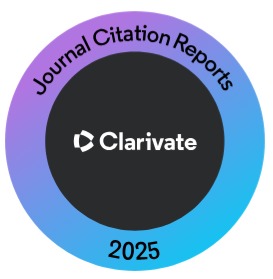Use of Electronic Media and its Association with Teenager's Behavior: An Analytical Cross-sectional Study in Community Clinics of Karachi
Keywords:
Electronic media, Behavior, Teenagers, Association, Adolescents, Media usageAbstract
OBJECTIVE: To estimate the proportion of electronic media usage among teenagers and identify the association between behavior and the use of electronic media.
METHODOLOGY: An analytical cross-sectional study conducted from December 2021 to February 2022. A sample of teenagers (n=340) were selected from primary care clinics of Chanesar Goth and Hijrat Colony, Karachi. Participants were questioned regarding their daily usage of media. Strengths and Difficulties Questionnaire was administered to assess the behavior. Data was analyzed using SPSS 23.
RESULTS: 350 teenagers were enrolled in the study, and the gender distribution was almost equal. Daily usage of media included Television(88.9%), videogames(47.4%), computer/laptop(79%), mobile phone(90.3%) and tablet(20.9%). The content viewed were movies (68.9%), Facebook (72%) and Chats/WhatsApp (76.6%). The mean of total difficulty score in our study population was 19.1 (SD: 4.8). On multivariate analysis, higher difficulty score was positively associated with increasing age (Beta: 0.428, 95% Cis: 0.070 -0.785, p-value: 0.019) and total screen time (Beta: 0.003, 95% Cis: 0.001 -0.005, p-value: 0.036) while difficulty score was negatively associated with male gender (Beta: -1.223, 95% Cis: -2.441 -- -0.005, p-value: 0.049).
CONCLUSION: Our population's media exposure and difficulty scores are higher than those of other populations. Media exposure needs to be reduced to control psychosocial problems.
References
Hale L, Li X, Hartstein LE, LeBourgeois MK. Media Use and Sleep in Teenagers: What Do We Know? Curr Sleep Medicine Rep. 2019; 5: 128-134. doi: 10.1007/ s40675-019-00146-x.
Strasburger VC, Jordan AB, Domnerstein Ed. Health Effects of Media on Children and Adolescents. Pediatrics. 2010; 125(4): 756-777. doi: 10.1542/peds.2009-2563. Epub 2010 Mar 1.
Trends in media use by children and young people, ACMA (Australian Communication and Media Authority). 2010 June; 1-34. Available from: https://silo.tips/download/communicating-facilitating-regulating-june-2010.
Poulain T, Vogel M, Neef M, Abicht F, Hilbert A, Genuneit J et al. Reciprocal associations between electronic media use and behavioral difficulties in preschoolers. Int J Environ Res Public Health. 2018; 15(4): 814. doi: 10.3390/ ijerph15040814.
Villanti AC, Johnson AL, Ilakkuvan V, Jacobs MA, Graham AL, Rath JM. Social Media Use and Access to Digital Technology in US Young Adults in 2016. J Med Internet Res. 2017; 19(6): 196. doi: 10.2196/jmir.7303.
Keles B, McCrae N, Grealish A. A systematic review: the influence of social media on depression, anxiety and psychological distress in adolescents. Int J Adolesc Youth. 2020; 25(1): 79-93. doi: 10.1080/02673843.2019.1590851.
Mathers B, Canterford L, Olds T, Hesketh K, Ridley K, Wake M. Electronic media use and adolescent health and wellbeing: a cross-sectional community study. Acad Pediatr. 2009; 9(5): 307-314. doi: 10.1016/j.acap.2009.04.003. Epub 2009 Jul 9.
Jones AF, Nieman P. Impact of media use on children and youth. Pediatr Child Health. 2003; 8(5): 301-306. doi: 10.1093/pch/8.5.301.
Scott H, Woods HC. Understanding links between social media use, sleep and mental health: recent progress and current challenges. Curr Sleep Med Rep. 2019; 5(3): 141-9. doi: 10.1007/s40675-019-00148-9.
Sampasa?Kanyinga H, Hamilton HA, Chaput JP. Use of social media is associated with short sleep duration in a dose-response manner in students aged 11 to 20 years. Acta Paediatrica. 2018; 107(4): 694-700. doi: 10.1111/apa. 14210. Epub 2018 Jan 24.
Ray M, Jat KR. Effect of electronic media on children. Indian Pediatr. 2010; 47(7): 561-8. doi: 10.1007/s13312 -010-0128-9.
Television in Pakistan- An Overview. Pakistan Researcher's Society. 2008.
Aleem N, Abro MR, Imam I, Gillani AH. Cell phone addiction in children and its impact on the psychology: a cognitive analysis of children in Pakistan. Hamdard Islam. 2020; 43(1): 358-368.
Syed EU, Hussein SA, Azam SI, Khan AG. Comparison of Urdu version of Strengths and Difficulties Questionnaire (SDQ) and the Child Behaviour Check List (CBCL) amongst primary school children in Karachi. J Coll Physicians Surg Pak. 2009; 19(6): 375.
Chang FC, Miao NF, Lee CM, Chen PH, Chiu CH, Lee SC. The association of media exposure and media literacy with adolescent alcohol and tobacco use. J Health Psychol. 2016; 21(4): 513-25.
Chang HY, Park EJ, Yoo HJ, won Lee J, Shin Y. Electronic media exposure and use among toddlers. Psychiatry Investig. 2018; 15(6): 568.
Macuh B, Raspor A, Sraka M, Kova?i? A. Media exposure and education of first to six grade children from Slovenia-parent opinions. Int J Cogn Res Sci Eng Edu. 2018; 6(3): 49.
Taylor G, Monaghan P, Westermann G. Investigating the association between children's screen media exposure and vocabulary size in the UK. J Child Media. 2018; 12(1): 51-65.
Strasburger VC, Jordan AB, Donnerstein E. Health effects of media on children and adolescents. Pediatrics. 2010; 125(4): 756-67.
D'Souza S, Waldie KE, Peterson ER, Underwood L, Morton SM. Psychometric properties and normative data for the preschool strengths and difficulties questionnaire in two-year-old children. J Abnorm Child Psychol. 2017; 45(2): 345-57.
Marzocchi GM, Capron C, Di Pietro M, Tauleria ED, Duyme M, Frigerio A et al. The use of the Strengths and Difficulties Questionnaire (SDQ) in Southern European countries. Eur Child Adolesc Psychiatry. 2004; 13(2): ii40-6.
Elberling H, Linneberg A, Olsen EM, Goodman R, Skovgaard AM. The prevalence of SDQ-measured mental health problems at age 5–7 years and identification of predictors from birth to preschool age in a Danish birth cohort: the Copenhagen child cohort 2000. Eur Child Adolesc Psychiatry. 2010; 19(9): 725-35.
Mellins CA, Xu Q, Nestadt DF, Knox J, Kauchali S, Arpadi S et al. Screening for mental health among young South African children: The use of the Strengths and Difficulties Questionnaire (SDQ). Glob Soc Welfare. 2018; 5(1): 29-38.
Hobbs T, Little M, Kaoukji D. Using the Strengths and Difficulties Questionnaire (SDQ) to measure the behavior and emotional health of children in schools in the United Kingdom. International Journal of Child & Family Welfare. 2007; 10(3-4): 150-64.
Arman S, Keypour M, Maracy M, Attari A. Epidemiological study of youth mental health using Strengths and Difficulties Questionnaire (SDQ). Iran Red Crescent Med J. 2012; 14(6): 371.
Downloads
Published
How to Cite
Issue
Section
License
Copyright (c) 2023 Journal of Liaquat University of Medical & Health Sciences

This work is licensed under a Creative Commons Attribution-NonCommercial-ShareAlike 4.0 International License.
Submission of a manuscript to the journal implies that all authors have read and agreed to the content of the undertaking form or the Terms and Conditions.
When an article is accepted for publication, the author(s) retain the copyright and are required to grant the publisher the right of first publication and other non-exclusive publishing rights to JLUMHS.
Articles published in the Journal of Liaquat University of Medical & health sciences are open access articles under a Creative Commons Attribution-Noncommercial - Share Alike 4.0 License. This license permits use, distribution and reproduction in any medium; provided the original work is properly cited and initial publication in this journal. This is in accordance with the BOAI definition of open access. In addition to that users are allowed to remix, tweak and build upon the work non-commercially as long as appropriate credit is given and the new creations are licensed under the identical terms. Or, in certain cases it can be stated that all articles and content there in are published under creative commons license unless stated otherwise.























